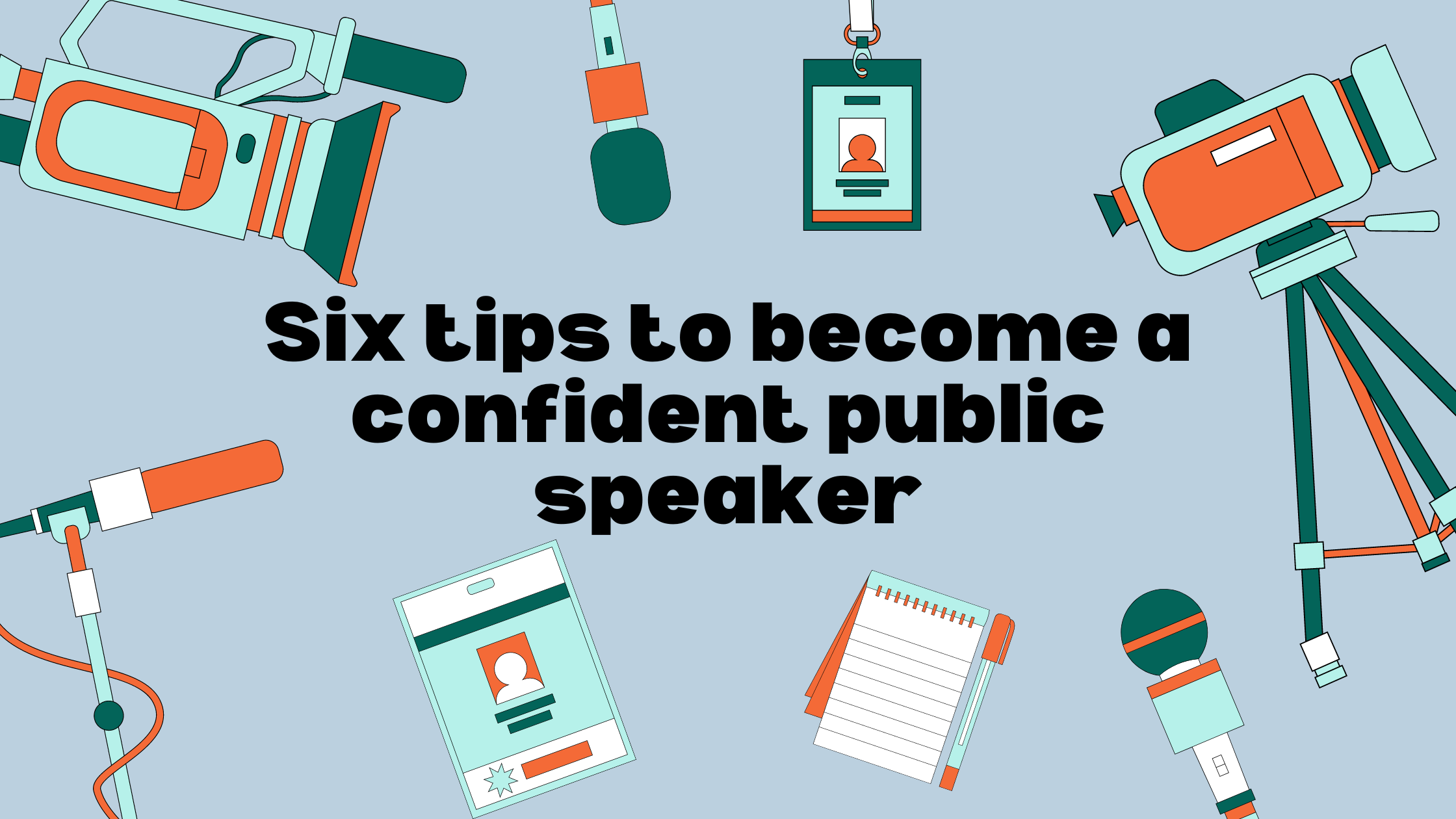It is hard to avoid public speaking as a public relations or communication professional. Whether it is giving a speech to a large audience, pitching ideas in a team meeting, or giving a presentation over Zoom, professional communicators regularly use public speaking as a communication tool to deliver messages to their audience.
When done effectively, public speaking can inform an audience and motivate them to take action. Unfortunately, many people experience fear and anxiety when tasked with public speaking. It is a skill that does not often come naturally and needs to be developed overtime. Practicing these six tips will help you develop public speaking skills and become an effective and more confident public speaker:
1. Know your audience
When preparing a presentation or speech, it is important to know your audience and to be aware of their interests, beliefs, and level of understanding. You should consider age, education level, attitudes, interests, and other factors of the audience when preparing materials. Knowing your audience allows you to adjust your overall approach, materials, and use of language to give an engaging presentation.
2. Preparation is key
Have you ever seen someone give a speech that appears effortless? Chances are there were many hours of preparation put into their speech. A good speech or presentation is one that has been prepared in advance. If you prepare minimally or not at all for your speaking engagement, you run the risk of rambling, appearing unprofessional, and lacking connection with your audience. You can prepare by creating an outline defining the beginning, middle, and end of the presentation, as well as the key points you would like to communicate. This will help you stay on topic and allow your presentation to flow effectively.
3. Practice!
It is time to practice once you have prepared your presentation! Practice is an important part of the public speaking process because it will make you feel more confident and produce a better outcome. You can practice giving your presentation to a family member or friend and ask for constructive feedback. Recording yourself giving the presentation is a great way to identify any distracting habits, like fidgeting or using filler words. If you choose to record yourself, remember not to be too critical. You will get better at public speaking with time and practice.
4. Set the pace
It’s easy to speak too quickly when you are nervous. We think the faster we speak, the faster the presentation will be over. That may be the case, but chances are the audience will have a difficult time understanding what is being said. Bri McWhorter, CEO of Activate to Captivate, describes speeding up as you speak as “the snowball effect,” something many of us fall victim to. We can prevent “the snowball effect” by remembering to breathe, sticking to a timed schedule, planning pauses, and pronouncing vowels when presenting.
5. Be engaging
Everyone has sat through a presentation where they have struggled to focus and pay attention to the speaker. This is because the average person has a short attention span. According to Forbes, cognitive scientists believe an audience starts to tune out of a presentation around the ten-minute mark. To keep your audience engaged, tell relevant stories, maintain eye contact, use visuals, and try adding polls or asking questions to involve the audience.
6. Don’t be too hard on yourself
Even the best public speakers make mistakes. If you mix up your words, continue with the presentation. The audience does not expect perfection and wants to see you succeed. The more you practice public speaking, the better and more confident you will be.
Article by: Leah Coughlin
Edited by: Megan Savary





